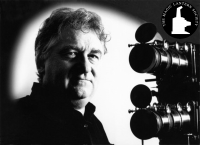Project
The Magic Lantern played a central role in the visual culture of the 17th to the 20th century. This audiovisual device, based on the creative projection of images with synchronised sounds, was a high impact communication medium for a broad public. Magic lantern glass slides were the vital piece of the projection. Their images illustrated topics from science to fairy tales, religious to burlesque themes.
Magic lanterns were of significant importance for entertainment as well as for scientific and educational purposes; however, the glass lantern slides remain until today an almost unknown heritage resource. Many libraries and museums worldwide hold extensive collections of the slides, however, there is a lack of thorough research on their production, history of use, and the best strategies for their conservation. This project will address these challenges with the first systematic, and comprehensive study of the relationship between tangible and intangible facets of the art of painting glass slides for projection by magic lanterns, enabling dynamical and sustainable fruition of this unexploited heritage.
This project will focus on the collections of hand-painted glass slides from the Portuguese institutions Portuguese Cinematheque-Museum of Cinema, Museum of Natural History and Science of the University of Lisbon, Science Museum of the University of Coimbra and Museum of the Faculty of Engineering of the University of Porto. Dating from 18th and 19th centuries, these slides were produced with different methods and materials, by international manufacturers, covering a wide assortment of themes.
Within Task 1, several parameters (e.g. format, image depiction technique, maker, time and place of production, subject and purpose) will be considered to select the most representative slides from each collection. The record of each slide, including description, the lexicum to be defined (Task 2), material characterisation (Task 4) and conservation condition assessment (Task 6) will be added to LUCERNA – the Magic Lantern Web Resource.
In Task 2, this project will investigate the use of an appropriate lexicum to classify the magic lantern slides according to their format, discursive genre and graphic record. This task will focus on a content analysis of the slides, intended to provide description guidelines and make the slides digitally available at Linternauta, as visual historical sources for research into Portuguese media culture and archaeology.
The collections under study also speak about the history of the use and the topics covered by magic lantern displays in Portugal, especially in the academies of science of Lisbon, Coimbra and Oporto. In Task 3, this project will explore the role of the magic lantern and glass slides in classroom and science communication of the main science academies of Portugal.
The glass substrate, paint composition and application techniques will be characterised chemically to assign production periods and sites. In Task 4, a multi-analytical methodology, which will cover elemental, molecular and structural analysis, will be developed to enable the identification of all components that make a magic lantern glass slide.
This methodology will be optimised by primarily using the reconstructions prepared in Task 5 with historically appropriate materials and techniques. These reconstructions will result from the critical analysis of historical sources of technical information such as the Winsor & Newton 19th Century Archive Database, a primary resource on the practices of a leading artists’ colourmen. By rediscovering the knowledge behind the production of hand-painted glass slides, this project will also develop reproduction methodologies of slides to be projected during re-enactments of magic lantern shows.
Furthermore, in Task 6, the historically accurate reference samples will also be used to conduct degradation studies and test conservation procedures towards the development of sustainable preservation methodologies.
In Task 7, the knowledge gained from this project will be shared with the community through a strong dissemination strategy that will include an international conference and a public exhibition, connecting the past to the present and creating visual culture dialogues. Contemporary artists will be invited to use this knowledge to produce innovative creations and re-enactments of magic lantern shows. New narratives will combine and expand our understanding of this important part of our heritage.
This project will be delivered by a multidisciplinary team committed to unleash meaningful and innovative approaches to the planned research. The knowledge created will be brought to the attention of institutions and collectors, to the public, and will be accessible for creative reuse, engaging new audiences. Our overall ambition is to develop and implement methodologies and tools that will have a great impact on the valorisation and future safeguard of the glass slides exclusively hand-painted and hand-painted over printed outlines in collections worldwide.


